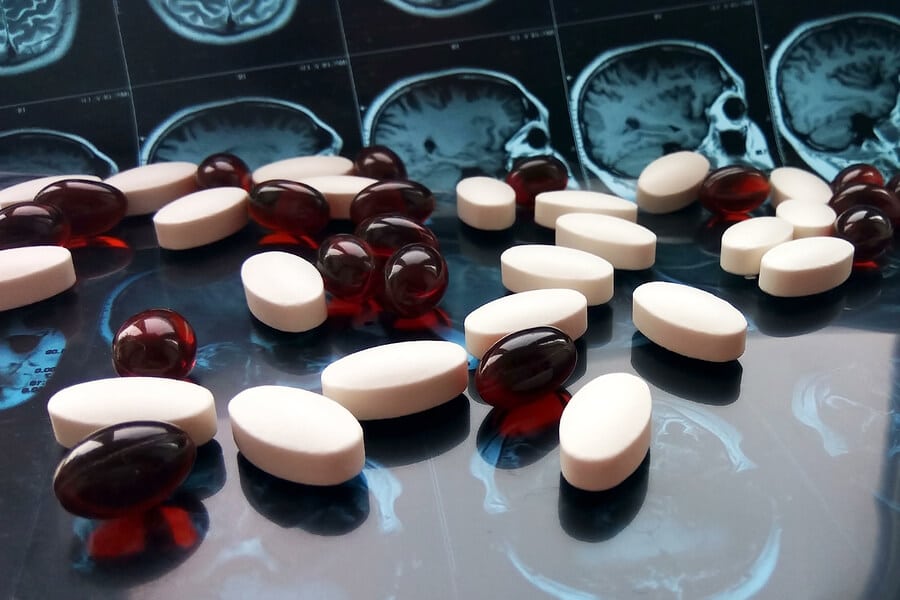
Alcohol is an intoxicating substance classified as a central nervous system (CNS) depressant. This classification means that heavy consumption inhibits activity in the CNS, eventually leading to slurred speech, impaired coordination, and delayed reaction time. As for alcohol’s effect on the mind, it’s a drug that impairs a person’s ability to reason and enact proper judgment.
Although alcohol is considered to be a depressant due to its action on the CNS, the effects of consumption may initially feel stimulating, and for this reason, it’s often used as a social lubricant. The temporary mood elevation is a result of alcohol’s ability to increase dopamine, a chemical neurotransmitter in the brain associated with feelings of euphoria and reward.
After several drinks, however, a person will begin experiencing alcohol’s depressant effects, which can result in slowed reaction time, memory loss, pain desensitization, and cognitive and mobility impairments. CNS depression can ensure to the point of unconsciousness, coma, and even death. Unfortunately, in the U.S. around 2,200 people die each year from complications that arise from severe alcohol poisoning.
Alcohol is a substance that, when abused, wreaks havoc on the health, well-being, and lives of people in many ways. The Centers for Disease Control and Prevention (CDC) states that excessive alcohol use in the U.S. led to an estimated 88,000 deaths and 2.5 million years of potential life lost each year from 2006-2010.
The Definition of “Drug”
The term “drug” refers to something, often a substance, that causes addiction, habituation, or a marked change in consciousness. Alcohol is a depressant drug, just like benzodiazepines, hypnotics, and muscle relaxers. Other classes of drugs include stimulants (e.g., cocaine and meth), hallucinogens (e.g., LSD and psilocybin mushrooms), and painkillers or opioids (e.g., heroin and oxycodone).
Alcohol is often thought of a bit differently than other drugs, however, because alcohol is legal in most regions worldwide, unlike heroin and cocaine. But, because alcohol is an intoxicant, it can be just as dangerous as other illicit drugs.
In fact, one could argue that alcohol is potentially more harmful than many other psychoactive substances, such as marijuana and LSD. Furthermore, alcohol is legal and culturally-accepted, making it particularly insidious.
How Is Alcohol Made?
Ethyl alcohol (ethanol) is the primary ingredient in beer, wine, and liquor that causes the intoxicating effects experienced by those who consume them. Alcohol is produced from yeasts and sugar through a process known as fermentation.
According to the National Institute on Drug Abuse (NIDA), “A standard drink equals 0.6 ounces of pure ethanol, or 12 ounces of beer; 8 ounces of malt liquor; 5 ounces of wine; or 1.5 ounces (a “shot”) of 80-proof distilled spirits or liquor (e.g., gin, rum, vodka, or whiskey).”
Fermented drinks can contain anywhere from 2% to 20% alcohol, and these typically include beer and wine. Distilled drinks (liquor) contain around 40-50% alcohol (or more) and include vodka, rum, whiskey, and gin.
The typical alcohol content for each kind of drink is:
- Beer 2–6%
- Cider 4–8%
- Wine 7–20%
- Tequila 40%
- Brandy 40% or more
- Rum 40% or more
- Gin 40–47%
- Vodka 40–50%
- Whiskey 40–50%
- Liqueurs 15–60%
How Does Alcohol Affect the Body?

Following consumption, a relatively small percentage of alcohol absorbs into the bloodstream through the stomach (about 20%) and the remainder through the small intestine (about 80%) until it enters the brain and begins to depress the CNS. As the body proceeds to break down alcohol in the liver, eventually it will be unable to keep pace because it can process only so much alcohol at a time.
When a person is drinking excessively, this produces a high alcohol concentration in the blood that then circulates throughout the body and leads to intoxication. Eventually, the depressant effects of alcohol can overwhelm the person’s system, hindering his or her ability to think or talk coherently, move with proper coordination, or, in severe cases, respond to external stimuli.
Short-Term Effects of Alcohol
- Impaired judgment
- Loss of inhibitions
- Slurred speech
- Loss of balance
- Poor coordination
- Blackouts/memory lapses
- Alcohol poisoning
- Nausea and vomiting
- Delirium tremens (DTs)
Long-Term Effects of Alcohol
- Depression
- Anxiety and agitation
- Brain damage
- Stroke
- High Blood Pressure
- Liver Disease
Furthermore, long-term alcohol use increases the risk of several forms of cancer, including that of the mouth, stomach, esophagus, breast, and colon.
Getting Treatment
Alcohol dependence is a common disorder that affects millions of Americans and can be devastating to a person’s life and family. If you or someone you love is suffering from alcohol addiction, help is available. Harmony Treatment and Wellness offers comprehensive, evidence-based treatment that includes behavioral therapy, individual and group counseling, health and wellness programs, aftercare planning, and more.
We employ caring addiction professionals who are trained to provide clients with the tools and support they need to achieve abstinence, prevent relapse, and maintain long-term sobriety and wellness.
Please give us a call as soon as possible to learn more about our alcohol treatment options and how we can provide you with the resources you need to begin your journey to recovery!























